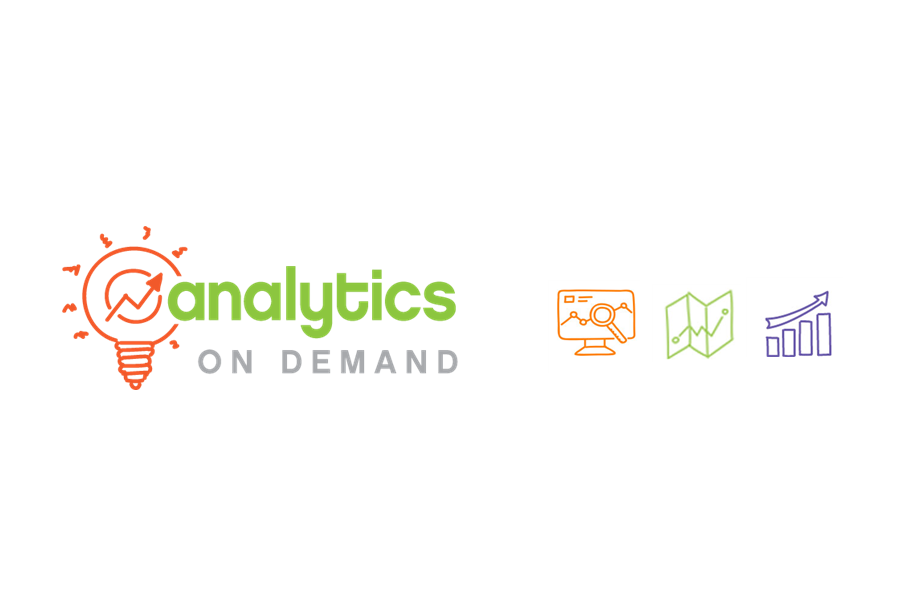Sue DeBrecht is Director of the Emmet O’Neal Library in the municipality of Mountain Brook, a wealthy suburb of Birmingham, Alabama with 20,000 residents. Sue loves information, and Analytics On Demand — a data solution that helps libraries quickly and easily learn more about their users and their communities — provides a wealth of it. Emmet O’Neal turned to Analytics On Demand to gain a more granular view of patrons and potential patrons than other sources of demographic data can provide. “We know where we are now, but we need a better idea of where to focus our attention in the next five years,” says Sue.
a wealthy suburb of Birmingham, Alabama with 20,000 residents. Sue loves information, and Analytics On Demand — a data solution that helps libraries quickly and easily learn more about their users and their communities — provides a wealth of it. Emmet O’Neal turned to Analytics On Demand to gain a more granular view of patrons and potential patrons than other sources of demographic data can provide. “We know where we are now, but we need a better idea of where to focus our attention in the next five years,” says Sue.
The library is tightly involved with its community, and is fortunate to have a healthy budget, loyal donors and volunteers, and a library foundation with a $3 million endowment. Still, directors want to make smart budget decisions, and key insights fromAnalytics On Demand将通知图书馆的编程,战略planning, and marketing.
Challenge
- Library directors sought insights to help them plan future programs, and standard demographic data didn’t provide the granular view they needed to understand the interests of users and other residents.
Solution
- Analytics On Demand
Data-Driven Purchasing and Programming Decisions
“We knew some of the statistics, but others were absolutely fascinating, especially because we’re always thinking about how to better meet the needs of Mountain Brook,” says Sue. “For instance, we have always had children’s programs, but learning that
36% of households have children and that another 14% are going to have children was compelling. In addition, we know that our community is aging, but the analytics about the 55-and-over group drove home that it’s a population we need to concentrate on.”
图书馆积极宣传和拥有强大的presence in social media, and Analytics On Demand will help it fine-tune and expand its outreach programs. “I have a map of where everybody lives who has a library card. If I can get the addresses of community residents who don’t have a library card, I can send a mailing to them geared toward our online products and programs they might not know we offer.” In addition, pulling information by zip code will help the library target specific areas, such as those with the greatest number of children.
Analytics On Demand uncovered helpful circulation data. “We’ve always looked closely at what materials get checked out, but having statistics categorized in so many ways was eye-opening,” says Sue. After finding that craft and gardening books were used infrequently, department managers scaled back purchasing in those areas and looked to reallocate dollars somewhere else.
One “somewhere else” is fitness, shown to be a high-interest topic. “Now we know that we need to have more programs on fitness.”
Sue also learned that her patrons are early adopters of technology, inducing her to talk to the IT department about ramping up the library’s focus on training for new technology products, such as the latest release of IOS. Her clientele is also interested in the environment, hybrid cars, and financial information. “We know that we’re a wealthy, highly-educated community and that our residents manage their wealth, so we’re considering programs in specialized finance areas because patrons already know the basics.”
 Easy-to-Use Reporting at an Affordable Price
Easy-to-Use Reporting at an Affordable Price
Analytics On Demand groups locals into distinct consumer segments, combining local demographic data with the library’s information to generate real-time reports on circulation trends and patron lifestyles.
“The more you dig into it, the more you learn. We’re all having fun runningdifferent reports,” says Sue, adding that the city manager has also found the data to be helpful.
She continues, “Analytics On Demand is reasonably priced. Your competitors are much more expensive. It’s also very easy for us to get the data. Some products require lots of work to get to the information you need.”
Sue notes that there are many other things that she wants to “tweak” based on information gleaned from Analytics On Demand. For instance, seeing that 25% of Mountain Brook’s residents have lived in their homes for 10–19 years is prompting her to re-evaluate the library’s annual card renewal program; every two or three years may suffice. Using Analytics On Demand also helped staff clean up the library’s records by eliminating several hundred duplicates.
One final piece of information that gratified Sue was the distance patrons drive to get to the library. “I was thinking everyone was about a ten-minute drive away, but many drive 20 minutes. I hear that we’re a destination library, and believe me, we’re definitely a destination library if people are driving 20 minutes to get here.” As Emmet O’Neal tailors its offerings based on the insights gained from Analytics On Demand, it’s likely that many more community residents will be willing to make that drive.
Results
- Analytics On Demand is an affordable, easy-to-use solution that delivers the power of analytics to the library, positioning it to better meet the needs of its patrons. Now the library knows exactly who is and isn’t using its products and services, and can see its community’s library activity aligned with demographics like location, household composition, length of residency, and more.
- The library is saving money by eliminating hundreds of duplicates from its user database. Directors also make more informed purchasing, marketing, and program decisions; for instance, scaling back purchases of library products that aren’t being utilized and reallocating dollars to topics shown to be of high interest.
- New programs and materials, informed by Analytics On Demand, promise to attract new users and build loyalty among existing patrons.

